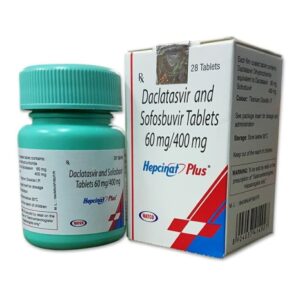
Introduction to Hepatitis Diagnosis
The journey to accurately diagnosing hepatitis, a potentially life-threatening liver infection, begins with understanding the disease’s complexity and the importance of early detection. This section introduces readers to the basics of hepatitis diagnosis, emphasizing the critical nature of timely and accurate testing.
Understanding Hepatitis: Types and Symptoms
Hepatitis comes in various forms—A, B, C, D, and E—each caused by a different virus and presenting unique challenges in diagnosis and treatment. This segment delves into the symptoms common to all types, such as jaundice, fatigue, and abdominal pain, setting the stage for why accurate diagnosis is crucial.
The Importance of Early Diagnosis
Early detection of hepatitis can significantly influence the treatment outcome. This part discusses the benefits of early diagnosis, including prevention of liver damage, decreased risk of liver cancer, and reduced transmission rates.
Diagnostic Methods Overview
Hepatitis, an inflammation of the liver, can be caused by viruses, alcohol consumption, drugs, or other medical conditions. Accurately diagnosing hepatitis is crucial for effective treatment and management. The diagnosis involves a combination of clinical evaluation, blood tests, imaging techniques, and sometimes a liver biopsy. Understanding the specific cause and the extent of liver damage guides the choice of treatment and management strategies.
Blood Tests Explained
Blood tests play a pivotal role in diagnosing hepatitis. They can detect markers of infection, such as viral antigens and antibodies, and assess liver function by measuring enzymes, proteins, and bilirubin levels. The most common blood tests include:
- Hepatitis Viral Serologies: These tests identify specific antibodies or antigens associated with different hepatitis viruses (A, B, C, D, and E), helping determine the type of hepatitis;
- Complete Blood Count (CBC): A CBC can reveal anemia or signs of infection, which may accompany liver disease;
- Liver Enzyme Tests: Elevated levels of liver enzymes, such as alanine aminotransferase (ALT) and aspartate aminotransferase (AST), suggest liver inflammation or damage.
Liver Function Tests
Liver function tests (LFTs) measure various enzymes, proteins, and substances in the blood to assess the liver’s health and functionality. Key components of LFTs include:
- Albumin: Low levels may indicate poor liver function;
- Bilirubin: Elevated bilirubin levels can signal liver dysfunction or bile duct obstruction;
- Alkaline Phosphatase (ALP): High ALP levels might suggest bile duct problems;
- Gamma-Glutamyl Transferase (GGT): This enzyme level increases with bile duct injury.
Imaging Techniques in Hepatitis Diagnosis
Imaging techniques provide visual insights into the liver’s structure, revealing abnormalities like liver enlargement, fatty liver, tumors, or signs of cirrhosis. Common imaging methods include:
- Ultrasound: A non-invasive way to view the liver and surrounding organs;
- Computed Tomography (CT) Scan: Offers detailed liver images, helping detect tumors or abscesses;
- Magnetic Resonance Imaging (MRI): Provides high-resolution images of the liver and bile ducts.
Liver Biopsy: When It’s Needed
A liver biopsy involves removing a small tissue sample from the liver for microscopic examination. It’s considered when imaging and blood tests cannot conclusively diagnose hepatitis or determine the extent of liver damage. A biopsy can assess the degree of inflammation, fibrosis, or cirrhosis and is essential for diagnosing autoimmune hepatitis or differentiating between chronic hepatitis B and C.
Advanced Molecular Tests
Molecular diagnostic tests detect the genetic material of hepatitis viruses, providing information on the virus type and load, which is crucial for treatment planning and monitoring. These tests include:
- Polymerase Chain Reaction (PCR): Detects and quantifies viral RNA or DNA in the blood, identifying active infections and guiding antiviral therapy;
- Genotype Testing: Determines the hepatitis virus strain, influencing treatment choice and duration.
Comparing Diagnostic Methods: A Table Overview
| Diagnostic Method | Types of Hepatitis Detected | Involved Procedure | Sensitivity | Specificity |
|---|---|---|---|---|
| Blood Tests | A, B, C, D, E | Non-invasive | High | High |
| Liver Function Tests | All types | Blood test | Moderate | Low |
| Imaging Techniques | Primarily B and C | Non-invasive | Low | Moderate |
| Liver Biopsy | All types | Invasive | Very High | Very High |
| Molecular Tests | All types | Non-invasive | Very High | Very High |
This table compares the primary diagnostic methods for hepatitis, providing a quick reference on their applicability, procedure type, and diagnostic accuracy.
Conclusion
In conclusion, the journey to a precise hepatitis diagnosis is intricate, demanding a comprehensive blend of clinical insight, laboratory testing, and advanced imaging techniques. From the initial suspicion of liver inflammation to the final determination of hepatitis type, extent of liver damage, and appropriate treatment plan, each step is crucial. Blood tests, liver function assessments, imaging modalities, and when necessary, liver biopsy and advanced molecular diagnostics, serve as the cornerstone of effective diagnosis.
This multifaceted approach ensures that each patient receives a tailored treatment strategy, highlighting the importance of accuracy and thoroughness in diagnosing hepatitis. As medical technology advances, the precision and ease of hepatitis diagnosis are expected to improve, offering hope for better management and outcomes for those affected by this condition.

